Results 10,351 to 10,360 of 12096
Thread: Anandtech News
-
02-19-20, 08:36 PM #10351
Anandtech: AMD Expands EPYC Lineup with 64-Core EPYC 7662 & Large Cache EPYC 7532 CPU
Today AMD has added two new processors into the EPYC lineup: the EPYC 7662, its fifth 64-core CPU for applications that need loads of cores, as well as the EPYC 7532, a 32-core CPU for programs that can take advantage of a large L3 cache. Dell and Supermicro are already signed up to use these new chips, and other system builders will be sure to follow.
Like AMD's other 64 core EPYC processors, the EPYC 7662 processor is a 64 core part with 256 MB of L3 cache. Intended to serve as a cheaper 64 core option for customers, the new processor comes in a tier lower than AMD's existing chips, and fittingly it has the lowest clockspeeds with a base clock of just 2.0 GHz, while the chip can boost to 3.3 GHz. Meanwhile, the TDP is rated for 225W, which is typical for many higher-end EPYC SKUs, but also higher than the 200W 7702 above it. In essence, we're looking at a less power efficient SKU for those parties who want to save some money on hardware at the cost of greater cooling needs and power consumption.
Meanwhile AMD's other new chip is the 32 core EPYC 7532. This chip is clocked at 2.4 GHz base while turboing to 3.3 GHz; but more importantly, it offers something not found on any other 32 core EPYC SKU: 256 MB of L3 cache. This allows the 7532 to fill the large cache niche that AMD and other server vendors always produce an SKU or two for, with the souped-up chip offering 8 MB of L3 cache per core instead of the normal 4 MB. Depending on the workload, a large cache configuration can help a program maximize its performance in cache sensitive applications, such as ANSYS CFX benchmarks, as well as its single-threaded/lightly-threaded performance in general that otherwise won't benefit from more cores. The catch for AMD, in turn, is that building a 256 MB L3 SKU requires eight chiplets no matter how many cores it has, so the 7532 is still a full-chiplet design, just with half of the CPU cores disabled..
Like all the latest AMD EPYC processors, the new CPUs also feature 128 PCIe 4.0 lanes, support up to 4 TB of DDR4-3200 DRAM support, and have robust security capabilities.AMD EPYC 7001 & 7002 Processors (2P) Cores
ThreadsFrequency (GHz) L3 TDP Price Base Max EPYC 7H12 64 / 128 2.60 3.30 256 MB 280 W ? EPYC 7742 64 / 128 2.25 3.40 256 MB 225 W $6950 EPYC 7702 64 / 128 2.00 3.35 256 MB 200 W $6450 EPYC 7662 64 / 128 2.00 3.30 256 MB 225 W ? EPYC 7642 48 / 96 2.30 3.20 256 MB 225 W $4775 EPYC 7552 48 / 96 2.20 3.30 192 MB 200 W $4025 EPYC 7542 32 / 64 2.90 3.40 128 MB 225 W $3400 EPYC 7532 32 / 64 2.40 3.30 256 MB 200 W ? EPYC 7502 32 / 64 2.50 3.35 128 MB 200 W $2600 EPYC 7452 32 / 64 2.35 3.35 128 MB 155 W $2025 EPYC 7402 24 / 48 2.80 3.35 128 MB 155 W $1783 EPYC 7352 24 / 48 2.30 3.20 128 MB 180 W $1350 EPYC 7302 16 / 32 3.00 3.30 128 MB 155 W $978 EPYC 7282 16 / 32 2.80 3.20 64 MB 120 W $650 EPYC 7272 12 / 24 2.90 3.20 64 MB 155 W $625 EPYC 7262 8 / 16 3.20 3.40 128 MB 120 W $575 EPYC 7252 8 / 16 3.10 3.20 64 MB 120 W $475
Dell and Supermicro will be the first companies to use AMD’s EPYC 7662 and EPYC 7532 processors in their PowerEdge R6515, R7515, R6525, R7525, and C6525 as well as A+ and Big Twin machines.
Related Reading:
- AMD Rome Second Generation EPYC Review: 2x 64-core Benchmarked
- AMD May Be Prepping More 280 W EPYC Enterprise CPUs
- AMD’s New 280W 64-Core Rome CPU: The EPYC 7H12
Source: AMD
More...
-
02-20-20, 08:58 AM #10352
Anandtech: Kioxia Releases First PCIe 4.0 SSDs: CD6 & CM6
Following through on their roadmap for transitioning to PCIe 4.0, Kioxia (formerly Toshiba Memory) has announced the availability of their first two PCIe 4.0 SSDs. The CD6 and CM6 SSDs target the datacenter and enterprise markets respectively, with a common hardware platform but some differences in configuration, features and performance.
The CD6 and CM6 use a next-generation SSD controller from Kioxia. As with most NVMe controller designs, the switch to PCIe 4.0 has triggered a switch to 16nm FinFET fabrication in order to permit higher performance within the same power limits. The CM6 uses an 18-channel controller while the CD6 gets a slightly cut-down 16-channel version.
Both drives are using Kioxia's 96L 3D TLC NAND, which helps improve performance, especially for write. Both models will feature capacities ranging from 800GB up to 15.36TB, and the CM6 will also be getting a 30.72TB model a bit later. The drives use the 2.5"/15mm U.3 form factor, backwards compatible with U.2 backplanes, but also supporting newer tri-mode SAS/SATA/PCIe backplanes and HBAs. Kioxia believes they are the first to start shipping PCIe 4.0 U.3 drives to customers.
The Kioxia CM6 offers the highest performance and most features. Sequential throughput is rated for up to 6.9 GB/s (reads) and 4.2 GB/s (writes), and random read throughput is up to 1.4M IOPS. Sustained raandom write performance is up to 170k IOPS on the 1 DWPD version of the CM6 intended for read intensive workloads, and up to 350k IOPS on the 3 DWPD version for more mixed workloads. Features exclusive to the CM6 include support for dual-port PCIe x2+x2 operation, support for up to 64 NVMe namespaces, and support for various sector sizes including Protection Information. Kioxia is also working on versions of the CM6 in the EDSFF E3.S and E3.L form factors.
The Kioxia CD6 is the more affordable version, cutting back a bit on controller channels and overprovisioning, and thus also performance. Sequential performance is up to 6.2 GB/s (reads) or 4 GB/s (writes), and random reads at 1M IOPS. The CD6 is the first generation of datacenter NVMe drive from Kioxia/Toshiba to include a 3 DWPD version in addition to the 1 DWPD tier. This means the maximum sustained random write performance from a CD6 is a huge improvement over the CD5, with the 3 DWPD version offering up to 250k IOPS and the 1 DWPD version offering up to 85k IOPS, compared to just 35k IOPS for the fastest CD5. The addition of the 3 DWPD tier is intended to help move some remaining SATA customers over to NVMe even if they are not yet comfortable with dropping down to 1 DWPD.Kioxia PCIe 4.0 NVMe SSD Specifications Model CD6 CM6 Form Factor 2.5" 15mm U.3 Interface, Protocol PCIe 4.0 x4, NVMe 1.4 NAND Flash Kioxia 96L 3D TLC Capacities (TB) 960GB,
1.92TB,
3.84TB,
7.68TB,
15.36TB800GB,
1.6TB,
3.2TB,
6.4TB,
12.8TB960GB,
1.92TB,
3.84TB,
7.68TB,
15.36TB,
30.72TB800GB,
1.6TB,
3.2TB,
6.4TB,
12.8TBWrite Endurance 1 DWPD 3 DWPD 1 DWPD 3 DWPD Sequential Read (GB/s) 6.2 GB/s 6.9 GB/s Sequential Write (GB/s) 4 GB/s 4.2 GB/s Random Read IOPS 1M IOPS 1.4M IOPS Random Write IOPS 85k 250k 170k 350k
The CM6 and CD6 also implement several new features from NVMe 1.4, including namespace granularity hints, persistent event logs, and support for multiple write streams with shared stream identifiers across a pool of drives. Power management support includes five different power states to limit each drive's power draw and heat output. Security features include TCG Opal and Ruby, with FIPS 140-2 certification on the way.
Related Reading:
- Toshiba Memory to Acquire Lite-On’s SSD Business: Gains IP, R&D, Manufacturing Ops
- Western Digital and Kioxia Announce BiCS5 112-Layer 3D NAND
- Toshiba Launches XL-FLASH 3D SLC NAND
- Samsung’s PCIe Gen 4 Enterprise SSDs Get Reliability & Performance Boost
More...
-
02-20-20, 12:15 PM #10353
Anandtech: Samsung Starts Mass Production at V1: A Dedicated EUV Fab for 7nm, 6nm, 5n
Samsung Foundry has started mass production of chips using its 6LPP and 7LPP manufacturing processes at its new V1 fab. The new facility employs one of the industry’s first production lines built from the ground up for technologies that heavily use EUV tools.
EUVL is a key enabler for Samsung’s next-generation leading-edge fabrication processes as it allows to reduce usage of multipatterning, and increases yields of chips architected for smaller technologies. Samsung currently uses EUVL equipment for its 6LPP and 7LPP nodes, and will expand its usage in future nodes such as 5LPE, 4LPE, 3GAE, and 3GAP processes.
[TABLE="align: center"]
[TR="class: tgrey"]
[TD="colspan: 6, align: center"]Advertised PPA Improvements of New Process Technologies
Data announced by companies during conference calls, press briefings and in press releases[/TD]
[/TR]
[TR="class: tlblue"]
[TD="width: 186"] [/TD]
[TD="width: 136, align: center"]7LPP
vs 10LPE[/TD]
[TD="width: 136, align: center"]6LPP
vs 7LPP[/TD]
[TD="width: 136, align: center"]5LPE
vs
7LPP[/TD]
[/TR]
[TR]
[TD="class: tlgrey"]Power[/TD]
[TD="align: center"]50%[/TD]
[TD="align: center"]lower[/TD]
[TD="align: center"]20%[/TD]
[/TR]
[TR]
[TD="class: tlgrey"]Performance[/TD]
[TD="align: center"]20%[/TD]
[TD="align: center"]?[/TD]
[TD="align: center"]10%[/TD]
[/TR]
[TR]
[TD="class: tlgrey"]Area Reduction[/TD]
[TD="align: center"]40%[/TD]
[TD="align: center"]~9%[/TD]
[TD="align: center"]
-
02-20-20, 12:15 PM #10354
Anandtech: Plextor Unveils M9P Plus SSD: A Proven Design Gets 96L 3D TLC & Up to 3.4
Plextor has introduced its new flagship consumer SSD lineup, the M9P Plus. The new drives continue to use Marvell’s proven "Eldora" controller, but come equipped with Kioxia’s 96-layer BiCS4 3D TLC NAND memory, and offer slightly higher sequential performance than its predecessors.
Set to be available in 256 GB, 512 GB, and 1 TB configurations, the new Plextor M9P Plus lineup is based on the Marvell 88SS1092 controller that is paired with Kioxia’s latest 96-layer BiCS4 3D TLC memory. By contrast, the previous-generation Plextor M9Pe family used the Marvell 88SS1093 controller (with higher clocks) along with Kioxia’s 64-layer BiCS3 3D TLC NAND.
When it comes to performance, the new M9 Plus 1 TB drives are rated for sequential read/write speeds up to 3,400/2,200 MB/s, which is 6.25% and 4.75% higher when compared to the M9Pe 1 TB. But there is a catch. Plextor says that the latest M9 Plus 1 TB SSDs deliver up to 340K/320K read/write random IOPS, which means 15% lower random reads yet 6.6% faster random writes when compared to the M9Pe 1 TB. Meanwhile, it is important to note that the 256 GB M9P Plus is rated to be considerably faster the 256 GB M9Pe (see the table below).
As they usually do, Plextor will offer its flagship SSDs in three versions: the M9PG Plus M.2-2280 module with a heat spreader, the M9PGN Plus M.2-2280 module without a heat spreader for laptops, and the M9PY Plus HHHL card with a heat spreader and an RGB LED. The drives are covered by a five-year warranty.
As Kioxia ramps up production of 96-layer 3D TLC NAND memory and winds down manufacturing of 64-layer 3D TLC NAND, it is not surprising that companies like Plextor have to adopt newer chips. What is odd is that Plextor isn't using a more recent controller. The 88SS1092 used in the M9P Plus is a derivative of the 88SS1093 that mostly adds support for more DRAM and NAND—changes that were primarily intended for the datacenter SSD market.Plextor M9Pe vs. M9P Plus Series Specifications Comparison 256 GB 512 GB 1 TB M9Pe M9P Plus M9Pe M9P Plus M9Pe M9P Plus Form Factor M9PeY/M9PY Plus: Half height half length PCIe add-in card (HHHL)
M9PeG/M9PG Plus: M.2 2280 with heatspreader
M9PeGN/M9PGN Plus: M.2 2280 without heatspreaderController M9Pe: Marvell 88SS1093
M9P Plus: Marvell 88SS1092Interface NVMe PCIe 3.0 x4 DRAM 512MB LPDDR3 1024MB LPDDR3 NAND M9Pe: Toshiba 64L BiCS3 3D TLC
M9P Plus: Kioxis 96L BiCS4 3D TLCSequential Read 3000 MB/s 3400 MB/s 3200 MB/s 3400 MB/s 3200 MB/s 3400 MB/s Sequential Write 1000 MB/s 1700 MB/s 2000 MB/s 2200 MB/s 2100 MB/s 2200 MB/s 4KB Random Read (QD32) 180k IOPS 300k IOPS 340k IOPS 340k IOPS 400k IOPS 340k IOPS 4KB Random Write (QD32) 160k IOPS 300k IOPS 280k IOPS 320k IOPS 300k IOPS 320k IOPS Endurance 160 TBW 320 TBW 640 TBW Warranty 5 years
Meanwhile, Marvell has announced two newer generations of client NVMe SSD controllers. Their PCIe Gen4 controllers announced in 2019 mark a shift in strategy away from high-end drives and focus instead on low power using fewer PCIe lanes and NAND channels. But Marvell's 2018 controller announcements included the 88SS1100 as a direct successor to the 88SS1093, increasing the CPU core count and NAND interface speed to get closer to the limits of a PCIe 3.0 x4 interface. It's not clear why Plextor is sticking with such an old controller when their supplier has had newer, more competitive solutions available for quite a while.
Related Reading:
- Toshiba Memory to Acquire Lite-On’s SSD Business: Gains IP, R&D, Manufacturing Ops
- The Plextor M9Pe NVMe SSD Review: Teaching An Old Chip New Tricks
- Plextor Launches M9Pe NVMe SSDs
- Plextor Announces M9Pe SSD: 3.1 GB/s, Marvell Controller, 64-Layer 3D TLC, RGB LEDs
Source: Plextor
More...
-
02-20-20, 02:39 PM #10355
Anandtech: ADATA Releases SE760 USB 3.2 Gen 2 External SSD: Up to 1000 MB/s
High-performance external storage devices are gaining popularity these days as many mobile PCs come with a relatively low-capacity SSD that cannot be upgraded. To that end, ADATA this week announced its new lineup of high-end external SSDs that offer high performance with capacities of up to 1 TB.
The ADATA SE760 external SSDs come in a Black or Titan Gray metallic enclosure that measure 122.2×44×14 mm (4.8×1.73×0.55 inch), which is large enough to house an M.2-2280 SSD and a PCIe-to-USB 3.2 Gen 2 bridge inside. ADATA does not disclose which drives it uses, but we do know that they are rated for up to 1000 MB/s sequential read and write speeds, with capacities ranging from 256 GB to 1 TB.
ADATA’s SE760 external SSDs are bus powered and feature a USB 3.2 Gen 2 Type-C interface, but to maintain compatibility with any PC, the manufacturer bundles the drives both with USB Type-C to Type-C as well as USB Type-C to USB Type-A cables.
When it comes to software compatibility, the ADATA SE760 drives can work with the usual suspects, including systems running Apple’s macOS, Google’s Android, Microsoft’s Windows, and Linux.
Unfortunately, while ADATA has announced the new SE760 drives, they are not disclosing pricing at this time. With 3D NAND prices remaining volatile, manufacturers are increasingly holding of on setting prices until the very last minute, so that they can best gauge the market.
Related Reading:
- CES 2020: Patriot Demonstrates PXD External SSD w/ USB-C
- CES 2020: Patriot Goes Big on Bandwidth For New EVLVR 2 TB3 SSDs
- ADATA’s HM800 DAS: Up to 8 TB, Up to 250 MB/s, Smart TV Recording
- CES 2019: The Quintessential ADATA HC770 External HDD, with RGB
- ADATA Unveils Ultra-Compact UE700 Pro External Flash Drives: Up to 360 MB/s
- ADATA Introduces SC660H and SV620H External SSDs with 3D TLC NAND
- ADATA Launches the SD700 External SSD: Dust, Water and Shock Resistant (with 3D NAND)
- ADATA SE730, SV620 and SC660 External SSDs Review
Source: ADATA
More...
-
02-20-20, 02:39 PM #10356
Anandtech: BIOSTAR Brings Windows 7 To Intel's B365 Platform: A Core i9-9900K w/ Win7
Even though Microsoft ended regular support for Windows 7 last month, there are millions of customers who continue to use the OS and plan to stick with it for a while to come. But even without essential security updates, trying to use Windows 7 in 2020 comes with an even bigger roadblock: most modern platforms aren't supported by the OS, which limits upgrades and replacement hardware to badly outdated parts. So, in an effort to continue supporting customers who want to use Windows 7 no matter what, BIOSTAR has found a way to install Windows 7 on its B365 chipset-based motherboards, which opens doors to new Windows 7-powered desktops with Intel's latest-generation CPUs.
Released in 2009, Microsoft Windows 7 does not support a host of technologies supported by the latest platforms, which is why Microsoft cut off new hardware support for Windows 7 starting with AMD’s Ryzen and Intel’s Kaby Lake (7th gen Core) platforms. Reciprocally, neither AMD nor Intel officially support Microsoft’s legacy operating systems with drivers for their latest platforms. As a result, while it's not impossible to install Windows 7 on newer hardware, it's certainly something that is discouraged at multiple levels.
But since it's not impossible, BIOSTAR has gone ahead and put together a special tool to simplify the process for users. The tool automatically adds Intel B365-specific features to a Windows 7 SP1 installation image, allowing the OS to be installed on the platform.
Overall, BIOSTAR's method overcomes the three key blocks that prevent Windows 7 from being installed on a new platform: the lack of UEFI loader, an xHCI driver for USB 3.0, and an NVMe driver. These problems can already by surmounted if you know what you're doing, but this is the first time we've seen a manufacturer so directly attempt to support Windows 7 on newer hardware via an easy-to-use method, and thus far BIOSTAR is the only company doing this. Not that it isn't without some peculiarities (described here), but support is support all the same.
BIOSTAR has two Intel B365-based motherboards that can use Windows 7: the ATX form-factor Racing B365GTA aimed at gamers, as well as the Micro-ATX B365MHC targeted at mainstream users. The former supports virtually all Intel LGA1151 processors, including the cream of the crop eight-core Core i9-9900K, whereas the latter can work with chips up to Intel’s eight-core Core i7-9700K.
Overall, BIOSTAR's decision to base their support around the B365 chipset is a curious one on the surface, but something that makes more sense as you dig into the chipset. While Intel’s B365 PCH is a part of the 300-series chipset family, the chipset is essentially a holdover from Intel's earlier 200 series chipsets, and has much more in common with them. So supporting Windows 7 on B365 is much less of a stretch than on Cannon Point chipsets like B360, as BIOSTAR doesn't have to worry about things like Intel's updated USB 3.1 Gen 2 controller or CNVi wireless support.
Related Reading:
- Intel Adds B365 Chipset to Lineup: The Return of 22nm
- BIOSTAR Adds Windows 7 Support To Some Intel and AMD Motherboards
- CES 2019: ASRock's Five New B365 Motherboards
- Microsoft Brings DirectX 12 To Windows 7
- Intel Preps New H310 Chipset Revision With Windows 7 Support For Coffee Lake
- How To Get Ryzen Working on Windows 7 x64
Source: BIOSTAR (via TechPowerUp)
More...
-
02-20-20, 07:04 PM #10357
Anandtech: Philips’s 243B1: A Cheap Monitor with USB-C Docking & Presence Detector
USB Type-C connectors on displays and docking capabilities for modern laptops are extremely convenient, but up until recently monitor manufacturers have treated USB-C as a premium feature. This is slowly but surely changing, as this week Philips introduced its business-oriented model 243B1, which promises to be one of the most reasonably-priced USB-C docking displays on the market.
The Philips 243B1 is a pretty regular 23.8-inch IPS monitor for office use, featuring a 1920×1080 resolution, 250 nits max brightness, a 1000:1 contrast ratio, 178º/178º viewing angles, and a 75 Hz maximum refresh rate. The LCD can display 16.7 million colors and covers 107% of the sRGB as well as 91% of the NTSC color gamuts, which is fine as most productivity applications (especially for Windows) use the sRGB range.
The key features of the Philips 243B1 are of course its docking and connectivity capabilities. The monitor has a USB 3.2 Gen 2 Type-C port with DP Alt Mode that supports a 65 W power delivery, which is enough for most laptops. And, when not being used with a modern laptop, the monitor also has a DisplayPort 1.2 input and an HDMI 1.4 port for legacy inputs.
Like many other docking-capable monitors, Philips's display also features an integrated GbE port and a quad-port USB 3.2 hub, reinforcing its docking role and offing additional ports for laptops that may come with few. Meanwhile, on the audio front, the LCD has two 2W speakers as well as 3.5-mm audio in/out connectors.
Another interesting capability of the Philips 243B1 monitor is its infrared PowerSensor, which detects whether or not someone is using the display. If there isn't a user present, the LCD reduces its brightness to cut down power consumption and prolong its lifespan.
Since the Philips 243B1 is designed primarily for offices where VESA arms are uncommon and placement is not always ideal, the monitor comes with a stand that can adjust height, tilt, and swivel. Also, the stand can rotate the display by 90º, which will be convenient for those who use two monitors in portrait mode.
Philips will start sales of the 243B1 monitor in the UK this March for a recommended price of £239.Specifications of Philips's B Line Monitor with USB-C Docking 243B1 Panel 23.8" IPS Native Resolution 1920 × 1080 Maximum Refresh Rate 75 Hz Response Time 4 ms GtG Brightness 250 cd/m² Contrast 1000:1 Viewing Angles 178°/178° horizontal/vertical Pixel Pitch 0.2744 mm² Pixel Density 92.56 ppi Display Colors 16.7 million Color Gamut Support 91% NTSC
107% sRGBStand Height: 150 mm
Tilt: -5° to 35°
Swivel: -180° to +180°
Pivot: -90° to 90°Inputs 1 × DisplayPort 1.2
1 × HDMI 1.4
1 × USB-C (DP 1.4 Alt Mode + 65 W Power Delivery)USB Hub 4-port USB 3.0 (Type-A) Audio 2W stereo speakers
audio in/out portsPower Idle 0.5 W Eco 14.6 W Peak 15.2 W Delivery 65 W Launch Price £239 in the UK
Related Reading:
- CES 2020: HP Unveils Advanced Docking Monitors w/ Webcam, GbE, USB-C PD
- Philips Brilliance 272P7VUBNB: A Sub-$350 27-Inch 4K IPS Monitor with 65W USB PD & GbE
- Philips Reveals 346B1C 34-Inch 100 Hz Curved UltraWide Monitor with USB-C Docking
- HP’s E344c: A 34-Inch Curved Ultra-Wide Productivity Monitor
Source: Philips
More...
-
02-21-20, 08:35 AM #10358
Anandtech: GIGABYTE Unveils Comet Lake-Based BRIX UCFF PC: 6 Cores, USB-C 3.2 Gen 2,
GIGABYTE has quietly added its first Comet Lake-U-powered ultra-compact form-factor (UCFF) BRIX PCs to its lineup. The new systems were designed for home, office, and commercial applications, they offer up to six cores as well as advanced connectivity.
GIGABYTE’s lineup of BRIX UCFF barebones PCs based on Intel’s 10th Generation Core (Comet Lake-U) processors currently includes four base models featuring the Core i7-10710U with six cores, the Core i7-10510U as well as the Core i5-10210U with four cores, and the Core i3-10110U with two cores. All systems can be equipped with up to 64 GB of DDR4-2666 memory using two SO-DIMMs, an M.2-2280 SSD with a PCIe 3.0 x4 interface, and a 2.5-inch SSD or HDD with a SATA 6 Gbps interface.
Connectivity capabilities of all Comet Lake-U-powered GIGABYTE BRIX systems are similar and include Intel’s Wireless-AC 3168 Wi-Fi 5 + Bluetooth 4.2 M.2-2230 adapter, a GbE port (controlled by the Intel i219V), a USB 3.2 Gen 2 Type-C connector, five USB 3.2 Gen 2 Type-A ports, two HDMI 2.0 display outputs, and a 3.5-mm combo jack for headsets, and an RS232 COM port. In addition, the new barebones can accommodate an add-on-card that adds another GbE and another RS232 COM port.
Measuring 119.5×119.5×46.8 mm, the GIGABYTE BRIX barebones with Intel’s Comet Lake-U will easily fit into any environment. GIGABYTE has developed a pretty broad market for the BRIX systems over the years, so the company is aiming for everything from home and office out to commercial applications like digital signage, and even for applications that require RS232 COM connectivity.
Overall, GIGABYTE is among the first computer makers to introduce UCFF barebones PC with Intel’s Comet Lake-U processors. Interestingly, despite mobile nature of the CPU, the manufacturer equips the systems with fairly beefy 90 W and 135 W external PSUs.
Now that GIGABYTE lists its Comet Lake-enabled BRIX barebones on its website, expect them to hit the market shortly.GIGABYTE's 10th Gen BRIX Mainstream Mini PC Systems Model BRi7H-10710 BRi7H-10510 BRi5H-10210 BRi3H-10110 CPU Core i7-10710U
6C/12T
1.1 - 4.7 GHz
12 MB
15 WCore i7-10510U
4C/8T
1.8 - 4.9 GHz
8 MB
15 WCore i5-10210U
4C/8T
1.6 - 4.2 GHz
6 MB
15 WCore i3-10110U
2C/4T
2.1 - 4.1 GHz
4 MB
15 WGPU Intel UHD Graphics 620 DRAM Two DDR4 SO-DIMM slots
Up to 64 GB of DDR4-2666 in dual-channel modeMotherboard proprietary Storage SSD M.2-2280 (PCIe 3.0 x4) DFF 1 × 2.5-inch/9.5-mm SATA 6 Gbps SD - Wireless Intel Wireless-AC 3168
802.11ac Wi-Fi + Bluetooth 4.2 moduleEthernet 1 × GbE port (Intel i219V) USB Front 1 × USB 3.1 Gen 2 Type-C
3 × USB 3.1 Gen 2 Type-ABack 2 × USB 3.1 Gen 2 Type-A Display Outputs 2 × HDMI 2.0b Audio 1 × 3.5mm audio jack (Realtek) COM 1 × RS232 COM port PSU 135 W PSU (19V/7.1A) 90 W PSU (19V/4.3A) Operating Temperatures 0°C to +35°C 0°C to +50°C Dimensions Length: 119.5 mm
Width: 119.5 mm
Height: 46.8 mm
Related Reading:
- Intel Confirms Comet Lake-Based NUC 10 ‘Frost Canyon’ UCFF PCs
- Intel’s Islay Canyon Mini NUCs Available: Whiskey Lake, Radeon 540X, 8GB LPDDR3
- GIGABYTE Updates BRIX SFF PCs with Intel’s Kaby Lake CPUs
Source: GIGABYTE (via CNX Software)
More...
-
02-21-20, 11:16 AM #10359
Anandtech: What's TLC is SLC Again: MEMXPRO Introduces PC32 Full-Drive Pseudo-SLC SSD
Pseudo-SLC caches for TLC-based SSDs are almost as old as TLC NAND itself, serving as a simple and practical solution to TLC's lower sustained throughput. But like all caches, pseudo-SLC caches have a finite size; and once you run over it, you're back to directly hitting the TLC. So what is a user or system builder to do if they need a drive with SLC-like performance all the time? For a while, the answer to that has been MLC drives, but with MLC slowly but surely on its way out as well, other solutions are needed. And to that end, MEMXPRO is introducing a series of new drives that go the opposite direction, embracing pseudo-SLC mode to its very core by making the entire drive pseudo-SLC.
Based on 64-layer 3D TLC memory, MEMXPRO's PC32 drives use drive-wide pseudo-SLC mode to give the drives MLC-like performance and reliability. This setup is overkill for most applications, but for use cases that require SSDs with long lifespans, and high durrability – MEMXPRO's specialty – the PC32 fills an important niche.
The MEMXPRO PC32 drives in are based on the Silicon Motion SM2262EN controller as well as Micron’s B17A 64-layer 3D TLC NAND memory, which is rated for 10,000 P/E cycles. By putting the drives in pseudo-SLC mode, the manufacturer is able to increase their durability to 40,000 P/E cycles, albeit at the cost of capacity. Since TLC NAND that offers 3-bits of storage per cell is otherwise reduced to 1-bit per cell, the drives are available in capacities from just 80 GB to 320 GB. As for throughput, with the high-end controller used for the drive, MEMXPRO has rated the drives' sustained sequential read and write performance 3,250 and 2,980 MB/s respectively, which is in line with other modern SSDs featuring a PCIe 3.0 x4 interface.
Under the hood, MEMXPRO’s PC32 drives are built on PCBs with side fill and under fill protective conformal coating to enhance their reliability. Also, they are designed to ensure reliable performance within industrial temperature ranges (-40°C to +85°C), so the number of applications they can address is wide. Meanwhile, the SM2262EN controller fully supports AES 256-bit encryption with TCG OPAL 2.0 compliance, so the manufacturer can enable this functionality at request with an appropriate firmware. PC32 also supports MEMXPRO’s proprietary mSMART intelligent storage management tool to monitor drive health and lifespan status that warns owner of the drive about increased risks.
MEMXPRO will demonstrate its PC32 and other SSDs at the upcoming Embedded World 2020 trade show later this month, and will start taking orders on the drives shortly. The company has also noted their interest in developing more all-SLC drives, noting that that if the market requires higher-capacity products in a different form-factor, those SSDs could be developed as well.
Related Reading:
- Greenliant Launches EnduroSLC SSDs with Up to 250K P/E Cycles
- Enmotus MiDrive: Rethinking SLC Caching For QLC SSDs
- Toshiba Launches XL-FLASH 3D SLC NAND
- Memblaze’s PBlaze5 X26: Toshiba’s XL-Flash-Based Ultra-Low Latency SSD
- ADATA Launches microSD Cards Based on SLC NAND Memory
- Western Digital Develops Low-Latency Flash to Compete with Intel Optane
Source: MEMXPRO
More...
-
02-21-20, 11:16 AM #10360
Anandtech: PCIe 6.0 Specification Hits Version 0.5: On Track for 2021
PCI-SIG has released version 0.5 of the PCIe 6.0 specification to its members this week. The new, "first draft" version of the spec includes the feedback the group got from its members after publication of version 0.3 back in October. With their latest update, PCI-SIG remains confident that it is on track to finalize the PCIe 6.0 standard in 2021.
It took PCI-SIG long seven years to complete the PCIe 4.0 specification, a long slog that the group has committed to avoiding going forward for PCIe 5.0 and beyond. With PCIe 6.0, PCI-SIG is keeping up that rapid pace of development, releasing the first draft version of the spec less than a year after formal announcement of the spec.
Overall, PCI-SIG has five key steps in creating a PCIe specification:
- Version 0.3 is beheld as a Concept and outlines the key features and architecture of the technology. In case of PCIe 6.0, we are talking about 64 GT/s per lane speed, pulse amplitude modulation with 4 levels (PAM-4) encoding, and forward error correction (FEC).
- Version 0.5 is considered as the First Draft specification and so it covers all the key aspects of the architecture and includes feedback from interested parties (within PCI-SIG) to version 0.3. Members of the group will be able to add new functionality to the technology at this point.
- Version 0.7 is deemed to be the Complete Draft, everything has to be defined at all levels and electrical specifications must have been validated via test chips. No new features may be added after release of this iteration of the specification.
- Version 0.9 is the Final Draft that is meant to allow PCI-SIG members to review the technology for their intellectual property.
- Version 1.0 is the Final Release.
The publication of version 0.5 of the PCIe 6.0 specification is essentially the final call for submissions of the new features by PCI-SIG member companies. Furthermore, with the first draft available, companies can start designing test silicon to ensure that everything works and even begin preliminary work on commercial chips.
The next milestone for the PCIe 6.0 specification will be the upcoming PCI-SIG Developers Conference 2020 in early June, where the group plans to present deep dives into the features of the technology.
Related Reading:
- PCIe 6.0 Dev Reaches v0.3; On-Track for a Full Specification In 2021
- PCI Express Bandwidth to Be Doubled Again: PCIe 6.0 Announced, Spec to Land in 2021
- Gen-Z PHY Specification 1.1 Published: Adds PCIe 5.0, Gen-Z 50G Fabric
- PCI-SIG Finalizes PCIe 5.0 Specification: x16 Slots to Reach 64GB/sec
- Synopsys Demonstrates CXL and CCIX 1.1 over PCIe 5.0: Next-Gen In Action
Source: PCI-SIG
More...
Thread Information
Users Browsing this Thread
There are currently 42 users browsing this thread. (0 members and 42 guests)






 Quote
Quote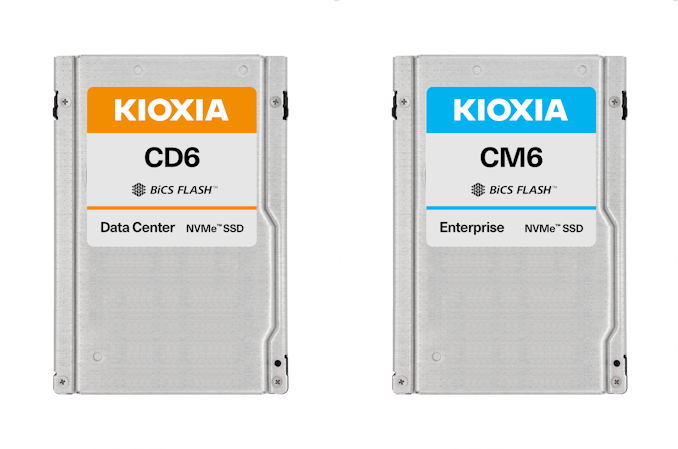
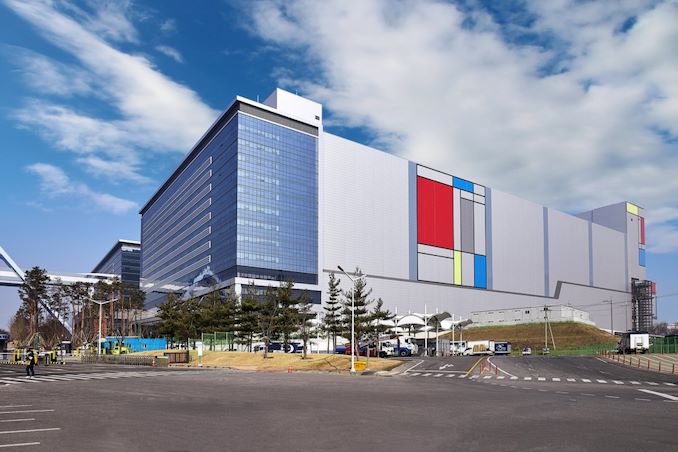
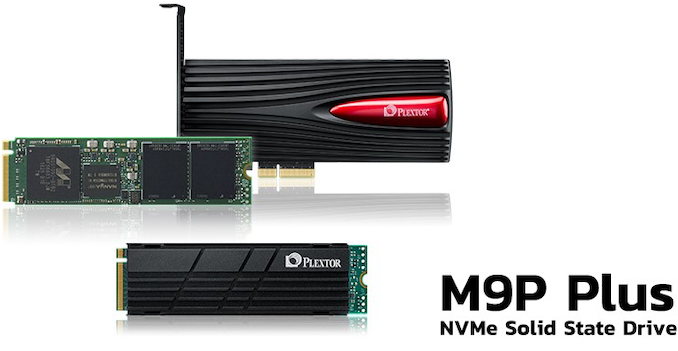
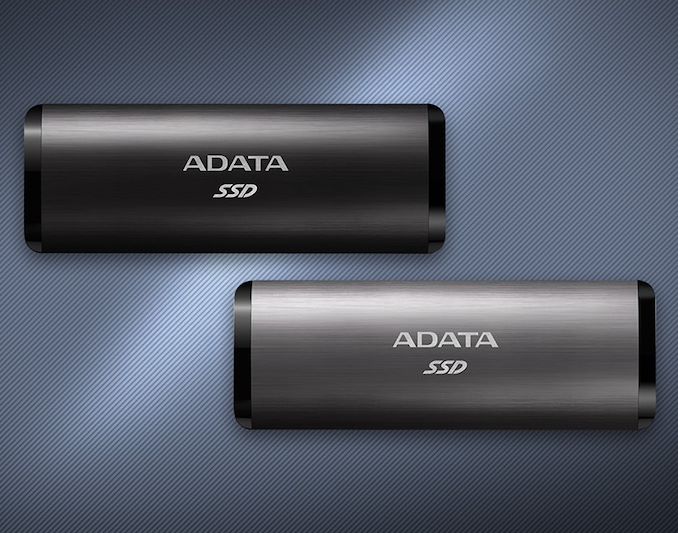
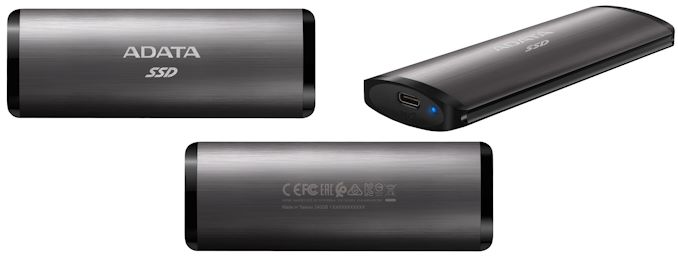
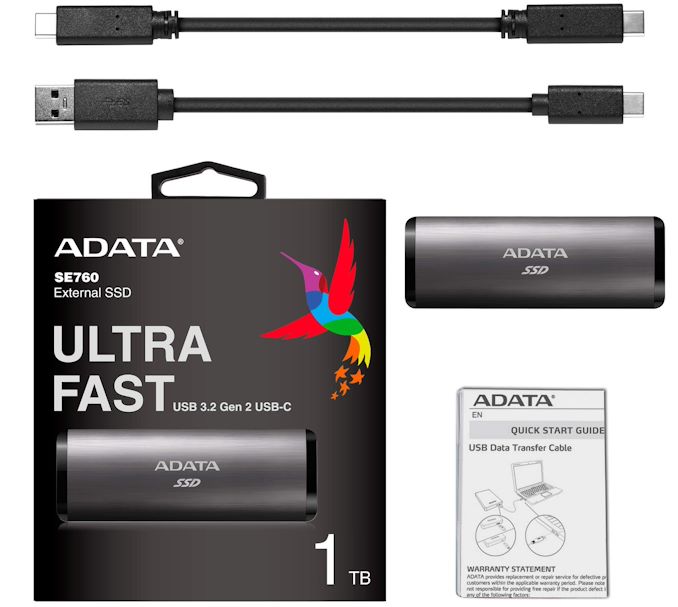
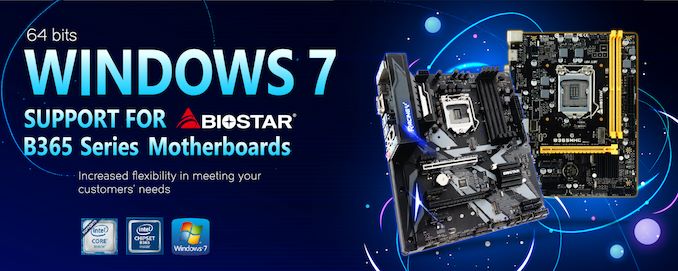

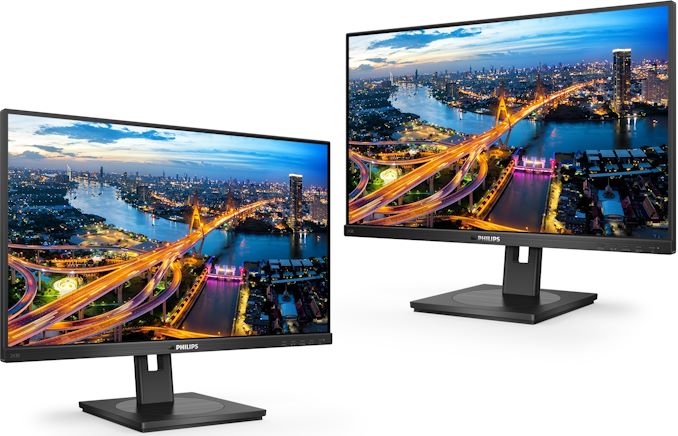
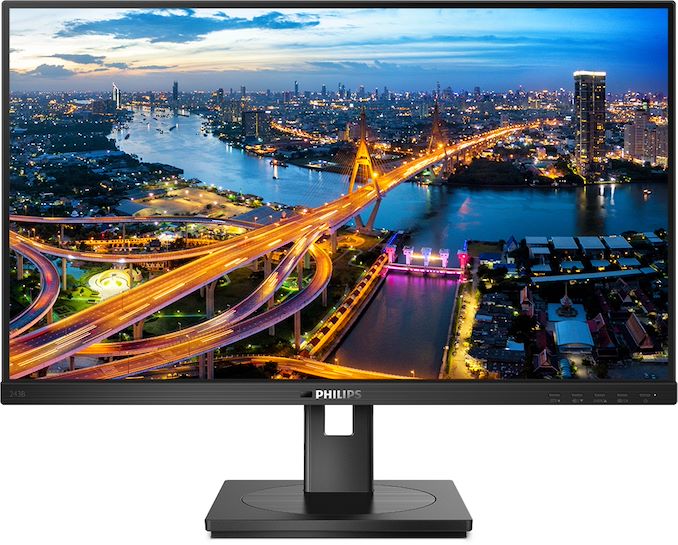
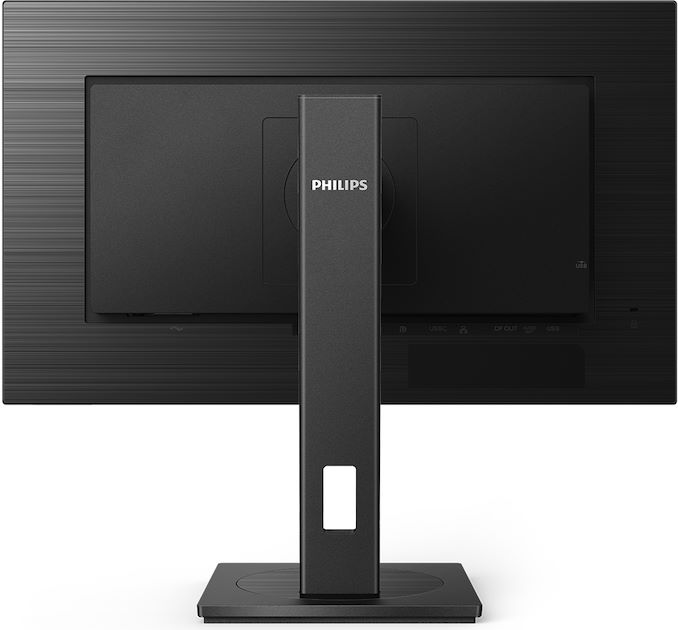
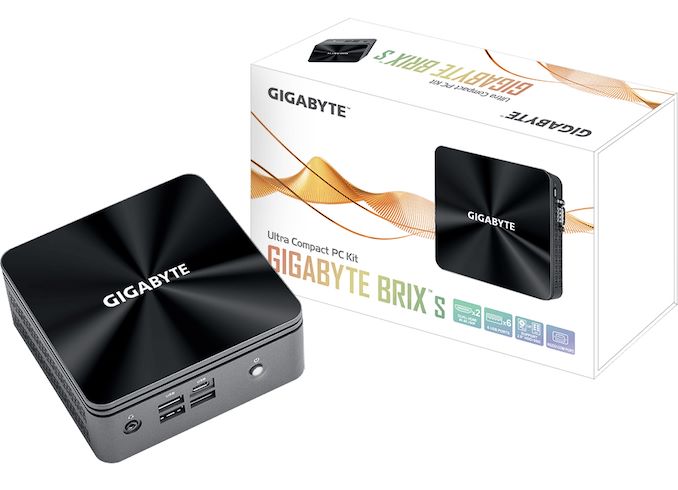

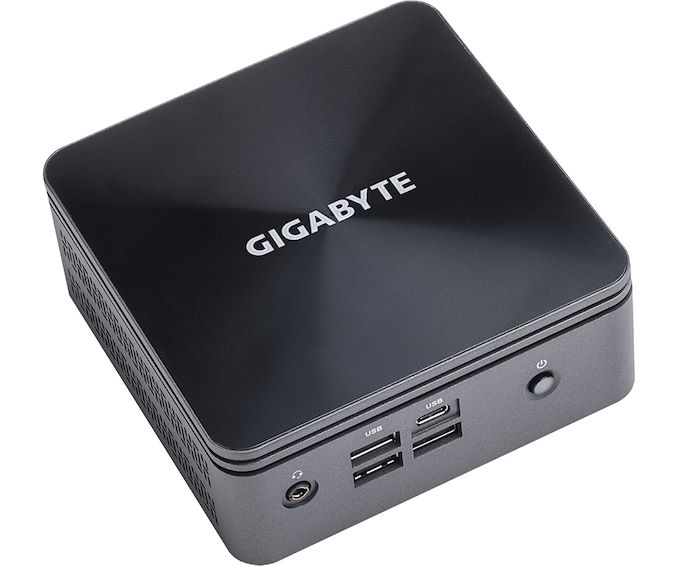
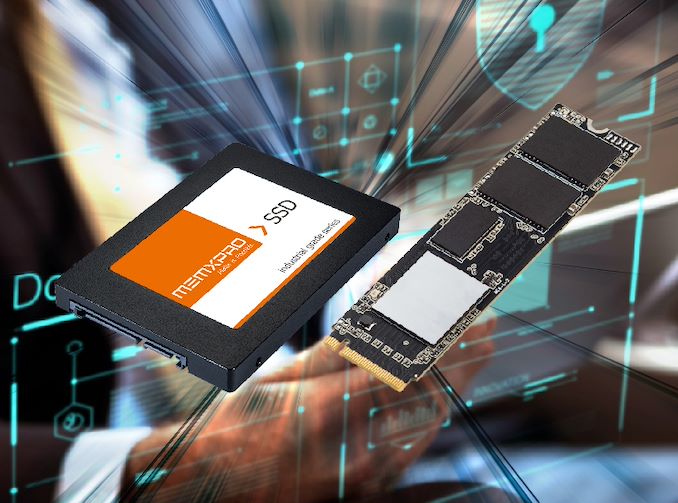
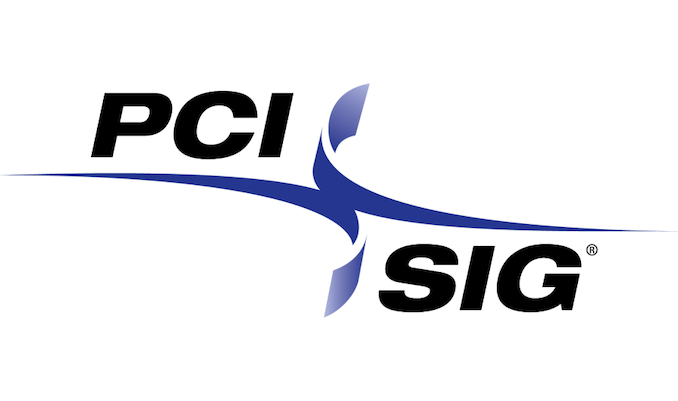
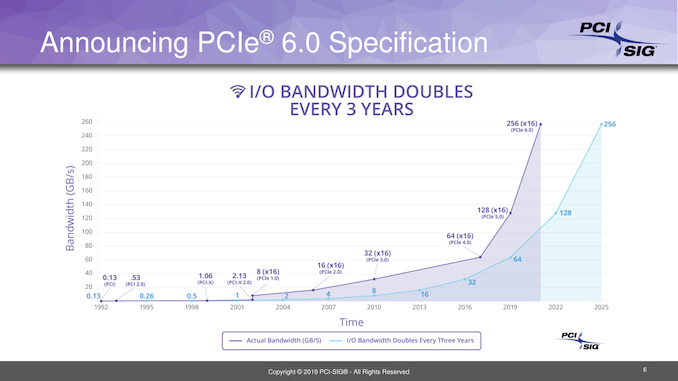
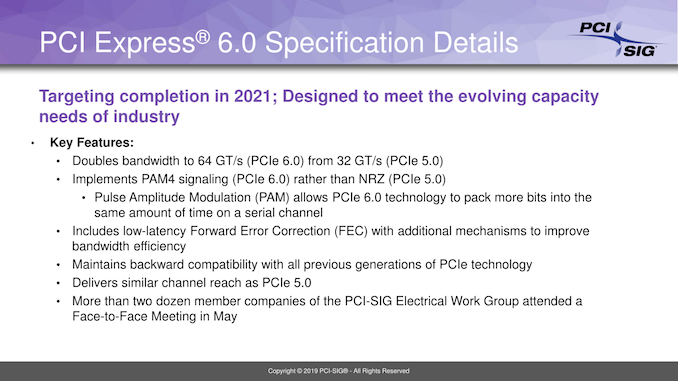
















Bookmarks